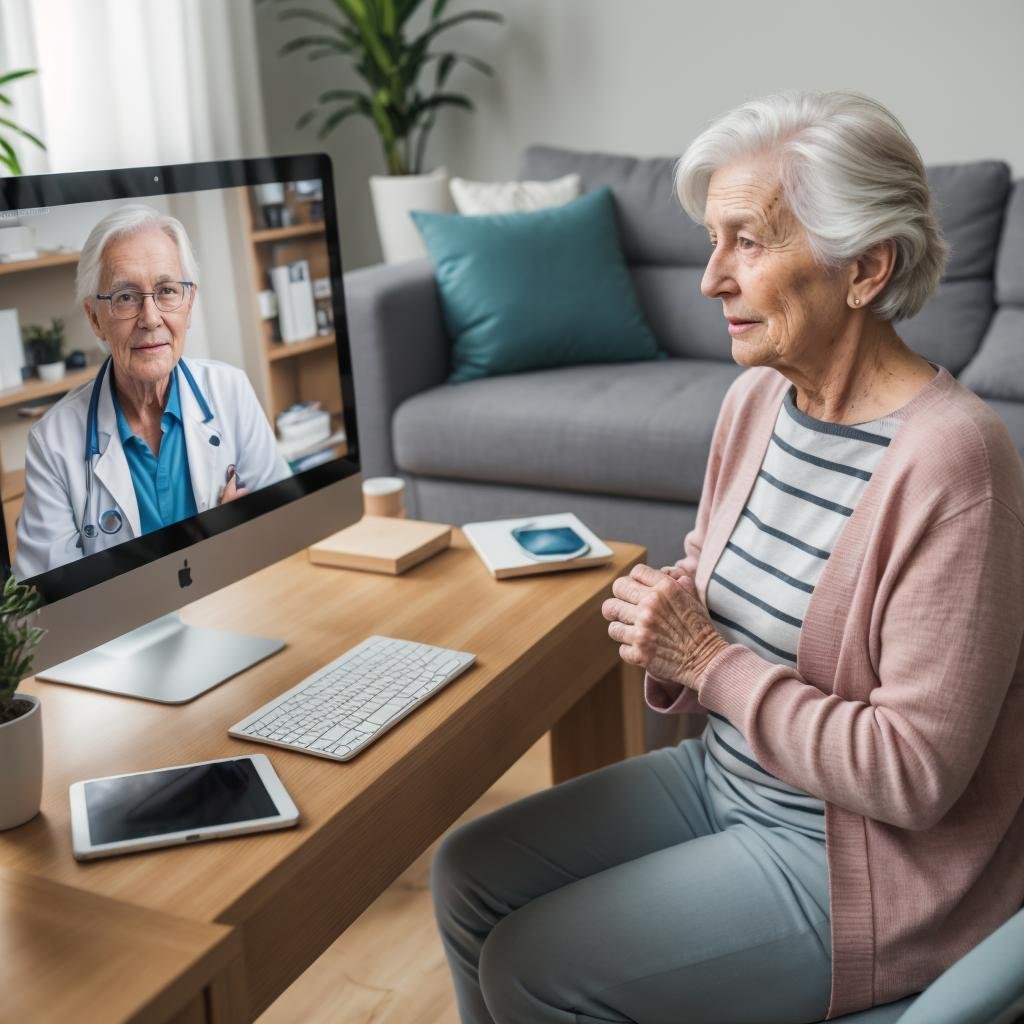Telehealth, or the use of technology to provide healthcare remotely, has exploded in popularity in recent years. While this can be a game-changer for busy professionals and people living in rural areas, it can also feel daunting, especially for older adults who may not be as comfortable with technology.
This blog post aims to demystify telehealth and show you, our valued senior citizens, how it can benefit you. We’ll cover the basics of what telehealth is, how it works, and the different ways you can use it to connect with your doctor.
What is Telehealth?
Telehealth is a broad term that encompasses any type of healthcare delivered remotely through technology. This can include:
- Video conferencing: This is the most common type of telehealth. You can use a computer, tablet, or even a smartphone to have a face-to-face video consultation with your doctor.
- Phone consultations: You can also talk to your doctor over the phone. This can be a good option if you don’t have access to video conferencing technology.
- Remote monitoring: Some doctors use devices that can monitor your health from afar, such as blood pressure monitors or weight scales. This data can be transmitted to your doctor electronically, so they can keep an eye on your health even if you’re not in the office.
How Does Telehealth Work?
To use telehealth, you’ll need a few things:
- A device: You can use a computer, tablet, or smartphone. Make sure it has a camera and microphone so you can video chat with your doctor.
- An internet connection: A strong internet connection is important for video conferencing. If you don’t have internet at home, you may be able to use a public library or community center.
- Software: Your doctor’s office will likely use a specific software program for telehealth appointments. They will give you instructions on how to download and install it.
What are the Benefits of Telehealth for Seniors?
There are many benefits to using telehealth, especially for seniors. Here are just a few:
- Convenience: You don’t have to leave your home to see your doctor. This can be a huge benefit if you have mobility issues or live in a rural area.
- Time savings: You won’t have to spend time traveling to and from the doctor’s office. This can free up your time for other activities.
- Reduced costs: Telehealth appointments can be cheaper than in-person appointments, as there are no overhead costs associated with travel.
- Improved access to care: Telehealth can make it easier to see a specialist, even if they don’t live near you.
- Better management of chronic conditions: Telehealth can be used to monitor chronic conditions, such as diabetes or heart disease. This can help prevent complications and improve your overall health.
How to Get Started with Telehealth
If you’re interested in trying telehealth, here are a few tips:
- Talk to your doctor. Ask if they offer telehealth appointments.
- Get help with technology. If you’re not comfortable using technology, ask a friend, family member, or caregiver for help. Many senior centers and libraries also offer classes on how to use telehealth.
- Be prepared for your appointment. Just like an in-person appointment, be prepared to list your symptoms and any questions you have for your doctor.
Telehealth is a safe and effective way to receive healthcare. Don’t let fear of technology hold you back from trying it. With a little help, you can easily connect with your doctor online and reap the benefits of telehealth.
Additional Resources
- The American Telemedicine Association: https://www.americantelemed.org/
- The National Institute on Aging: https://www.nia.nih.gov/
- Medicare.gov: https://www.medicare.gov/
We hope this blog post has helped demystify telehealth for you. If you have any questions, please feel free to leave a comment below.
Disclaimer: This blog post is for informational purposes only and should not be construed as medical advice. Please consult with your doctor before using telehealth.

